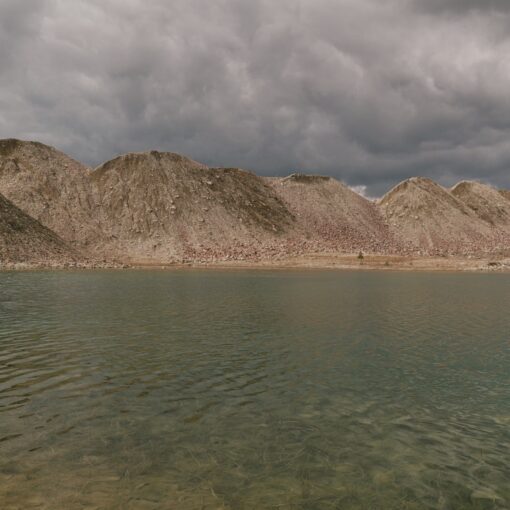French sound artist Yannick Dauby (along with Wan-Shuen Tsai) are in the MoKS residency for the month of June. I asked Yannick to write down some of his reflections on field recording and the sound environment he found in Estonia:
—
Listening notes, Eesti mid-June 2007 (additional descriptions with sound clips on kalerne.net)
The first sound, while stopping on a road in the countryside. Some repetitive sound phenomena in the cold mist. A multiplied simple noise pattern making a complex asynchronous polyphony. Is this “crek-crek” sound made by insects (it sounds like some grasshopers but the temperature is too cool) or by frogs (maybe a specie that I don’t know but amphibians are not supposed to mate anymore) ?
Absence of planes, something a friend told me about. Les oreilles dabouches. The absence of background low frequency sounds in the forests and the early morning gives an impression of vertigo. The listening is switched towards the upper range, the ears levitate.
At least, absence of human-made sounds, in the pleasant never-ending days that transform into luminous nights. The only songs of creatures of this land are the ones of the spring birds. Some kind of heaven for a field recordist, except the immediate surrounding of our residency is quite exhausting. Between 8 am and 8 pm, not one single minute without a motor noise. Machines used for fixing buildings, trucks passing one after the other, cars and 4 wheels motorbike driving at 70 km/h on small earth roads (these ones are much noisier than the asphalt ones), and not forgetting the curious passion of Estonians for lawn-mowers. All these hide the sounds of the wind and the voices of the people. Euro-money flow transforms the inhabited areas, but for the moment, considering only the listening side, it is a nightmare compared to the countryside quietness.
Why do I disregard nightingales ? Probably because of the powerful intensity and incredible pretentiousness of their “songs”. Nothing subtle in these chirps, I highly prefer owls and nightjars. But the Estonian ones seemed so different to my ears. Like ringing bells from far away, with some preferred melodic patterns that are easy to notice. And then, I discovered the existence of a second species of nightingale. The ones that I experienced so often in France, megarhynchos is replaced here by the luscinia. Suddenly my poor representation of this birdsong switches to a quite unusual interest. Some people could call it “positive discrimination”.
Finally, Evelyn brought us an answer… Crex crex, the corncrakes is the author of this sound heard almost everywhere, this curious repetitive sound structure. I recorded one of them, maybe from less than one meter. Corncrakes are so abundant in Estonia that they evoke an orthopteras chorus when their songs synchronize and desynchronize. Like the three locustella present here and the nightjar, they don’t whistle and sing, rather they produce some sounds that are difficult to distinguish from mechanical stridulations. The extremists are the storks. Fred Jüssi, animal phonography pioneer in Estonia, told that the birdsongs devolved in storks from a vocal sound to some percussion of the beak. In this part of the world, storks devolve and corncrakes behave like insects.
Yannick’s recording of Crex Crex (1:04) Estonia, June 2007:
Like the thrush nightingale’s song, the Estonian language surprises with its flux of distinct and precise consumes, the pauses caused by the rrrrrolling of the tongue and the soft curves of the intonations. Probably the friend was right. Estonian is a language that one should prefer not to understand, just to appreciate the beauty of how it sounds. It has nothing to do with the nosy French, rude German, monotonous Finnish and frivolous Italian. But like in any foreign country, the traveller who pays more attention to the sound of a language misses the complexity of its culture.
Nightjars, the greedy bird, add some subtle tapestry in the reverberant forest. When one begins, it makes a monotonous and discrete pattern. If another joins him, then the regular and repetitive song becomes an acoustic moire making the trees oscillate.
Walking on a path in a forest; a chaffinch’s call echoes between the high trees surrounding us. Then a very distant noise rises up. It becomes like a continuous wave on a shore. It grows and fills the forest. At the peak of this sound, a car appears and disappears at the extremity of the path, where a road was. After one second, a very soft and short “woosh” indicates the immediate past presence of this car, and the whole noise disappears in a distant fade.
Walking amongst ruins has always been one of my favorite activity. Here, John guides us to abandoned and empty buildings that provide amazing acoustic playground and even sometimes hide some artifacts that can be used as sound producing tools. Their floor propose an infinity of crackling sounds. Metallic structures await being acoustically explored and vibrate under the wind. Used telephone and power lines are the strings of this land, but since they don’t have any soundboard only the skin and the microphones can let hear their resonance.
Yannick Dauby – 15.06.2007 – Mooste, Estonia
-> www.kalerne.net
-> www.yannickdauby.net




